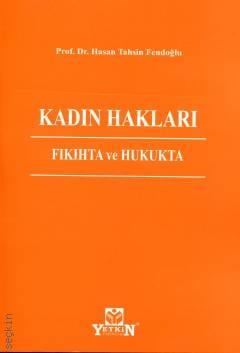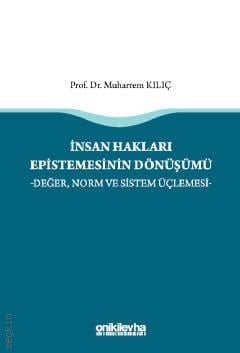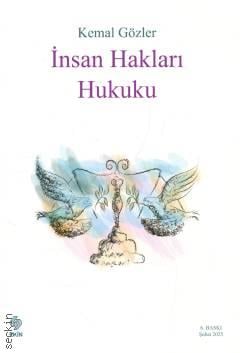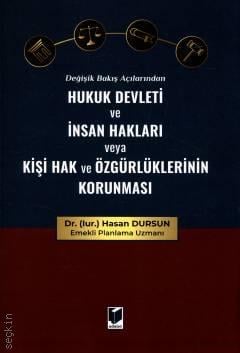>
Hukuk Kitapları>
Anayasa Hukuku>
İnsan Hakları>
Human Rights Protection Mechanism of Migrant Workers as A Vulnerable Group in Russia
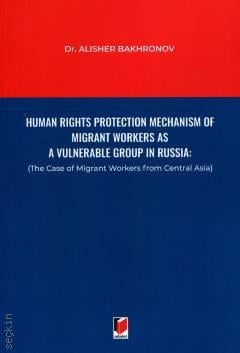
Human Rights Protection Mechanism of Migrant Workers as A Vulnerable Group in Russia
1. Baskı,
Temmuz 2024
Kitabın Detayları
Dili:
İngilizce
Ebat:
16x24
Sayfa Sayısı:
247
Kitabın Fiyatı:
455,00₺
Temin süresi 2-3 gündür.
Kitabın Açıklaması
The author offers a comprehensive analysis of the legal and social aspects protecting the rights of migrant workers. The book examines key problems faced by migrants from Central Asia and proposes legal and social solutions to improve their working conditions and rights. This book provides valuable information for lawyers, human rights activists, and policymakes in the field of labor migration
Kitabın Konu Başlıkları
The Concept, Reasons and Prerequisites for the Emergence of Labor Migration
International Legal Framework for the Protection of the Rights of Migrant Workers
Problems of Legal Regulation of Mechanisms for Protecting the Rights of Migrant Workers from Central Asia in the Russian Federation
Kitapla İlgili Kategoriler
Yorumlar
Kitabın İçindekileri
CONTENTS
ACKNOWLEDGEMENT
5
CONTENTS
7
ACRONYMS AND ABBREVIATIONS
11
INTRODUCTION
13
CHAPTER 1
THE CONCEPT, REASONS, AND PREREQUISITES FOR THE
EMERGENCE OF LABOR MIGRATION
1.1. MODERN LABOR MIGRATION AND ITS TRENDS
17
1.1.1. The Concept, Causes, and Trends of Modern Labor Migration
17
1.1.1.1. Origins of Modern Labor Migration
17
1.1.1.2. Economic Factor as the Main Cause of Modern Labor
Migration
18
1.1.1.3. The Concept of Labor Migration
20
1.1.1.4. General Trends and Types of Labor Migration
21
1.1.2. The Impact of Labor Migration on the Globalization Process
23
1.1.3. Problems Arising Due to Labor Migration
28
1.1.4. Illegal Labor Migration as an Unsettled Process
31
1.2. MIGRANT WORKERS AS A VULNERABLE GROUP
35
1.2.1. The Concept of Migrant Workers
35
1.2.2. Categorization of Migrant Workers
40
1.2.3. Differentiation between Refugees and Migrant Workers
43
1.2.4. Migrant Workers and their Vulnerability
48
1.3. CAUSES OF LABOR MIGRATION FROM CENTRAL ASIAN COUNTRIES TO
RUSSIA
52
1.3.1. The Collapse of the USSR as the Main Factor in Mass Migration
52
1.3.2. Political and Economic Problems of the countries of Central Asia
55
1.3.3. Demographic Problems Contributing to Labor Migration
60
CHAPTER 2
INTERNATIONAL LEGAL FRAMEWORK FOR THE PROTECTION
OF THE RIGHTS OF MIGRANT WORKERS
2.1. MIGRANT WORKERS AND HUMAN RIGHTS
65
2.1.1. Universal International Human Rights Standards
65
2.1.2. Human Rights of all Migrants
68
2.1.3. Human Rights of Migrant Workers
71
2.2. INTERNATIONAL LEGAL NORMS REGULATING THE PROTECTION OF THE RIGHTS OF MIGRANT WORKERS
74
2.2.1. The Concept of International Labor Standards
74
2.2.2. Base and other International Labor Standards of the ILO
Governing the Rights of Migrant Workers
76
2.2.3. Migration for Employment Convention (Revised), 1949 (No. 97)
83
2.2.4. Migrant Workers (Supplementary Provisions) Convention, 1975
(No. 143)
86
2.2.5. International Convention on the Protection of the Rights of All
Migrant Workers and Members of Their Families (ICRMW)
92
2.2.5.1. Structure of the ICRMW
92
2.2.5.2. The principle of non–discrimination
93
2.2.5.3. Main Provisions of Parts III and IV of the ICRMW
Concerning the Human Rights of Migrant Workers
94
2.2.5.4. Housing Rights of Migrant Workers
97
2.2.5.5. Family Members of Migrant Workers
97
2.2.5.6. Rights to Education
99
2.2.5.7. Political Rights
101
2.2.5.8. Right to Protection from Expulsion
102
2.2.5.9. Rights of Migrant Women
103
2.2.6. Drawbacks of the UN Convention (ICRMW) in Relation to ILO
Standards
104
2.3. THE ROLE OF ILO AND CMW IN THE FIELD OF HUMAN RIGHTS
PROTECTION OF MIGRANT WORKERS
107
2.3.1. Influence features of ILO in relation to the rights protection of
migrant workers
107
2.3.1.1. Features and Properties of the ILO
107
2.3.1.2. ILO Bodies
109
2.3.1.3. Control Functions of the ILO
110
2.3.1.4. ILO Complaint Procedures
111
2.3.2. Control functions of the CMW over compliance with the ICRMW
113
2.4. THE ROLE OF INTERNATIONAL LAW AND THE LAWS OF THE RUSSIAN
FEDERATION
115
2.4.1. Influence of the norms of international law on the legal system
of the Russian Federation
115
2.4.2. Ratified norms of International Law on the Protection of the
Rights of Migrant Workers in Russia
120
2.4.3. Laws of the Russian Federation Defining the Legal Status of
Migrant Workers
123
2.5. EURASIAN ECONOMIC UNION (EAEU) AND LABOR MIGRATION
(ADVANTAGES AND DISADVANTAGES)
125
2.5.1. Features of the EAEU Treaty in the Field of Labor Migration
125
2.5.2. Legal Problems of Labor Inequality in Russia within the
framework of the EAEU
128
2.5.3. EAEU and CIS regarding the Free Movement of Migrant Workers
from Central Asia
132
2.5.3.1. Influence of the Eurasian Economic Commission (EEC)
on the Labor Force Movement
132
2.5.3.2. The Role of the CIS in the Integration of Migrant
Workers from Central Asia in Russia
135
CHAPTER 3
PROBLEMS OF LEGAL REGULATION OF MECHANISMS FOR PROTECTING THE RIGHTS OF MIGRANT WORKERS FROM CENTRAL ASIA IN THE RUSSIAN FEDERATION
3.1. MECHANISMS FOR PROTECTING HUMAN RIGHTS AND FREEDOMS
139
3.1.1. Supranational Protection Mechanisms
140
3.1.2. National Protection Mechanisms
148
3.2. PROBLEMS OF THE LEGAL STATUS OF MIGRANT WORKERS
157
3.2.1. Constitutional and Legal Status of Foreign Citizens and Stateless
Persons in the Russian Federation
157
3.2.1.1 Constitutional Rights of Foreign Citizens and Stateless
Persons
157
3.2.1.2. Constitutional Problems in the Regulation of the
Human rights of Migrant Workers in Russia
162
3.2.2. Issues of Legal Regulation of the Federal Law No. 115–FZ
166
3.2.3. Problems of the Legal Status of Migrant Workers from Central
Asia in Russia
169
3.2.3.1. Legal Status of Migrant Workers
169
3.2.3.2. Central Asian Migrant Workers
171
3.3. PROBLEMS RELATED TO MECHANISMS FOR PROTECTING THE RIGHTS
OF MIGRANT WORKERS
173
3.3.1. Negative Social Factors Affecting the Integration Process of
Migrant Workers
173
3.3.2. Shortcomings of the System Mechanisms Obstructing the
Protection of the Rights of Migrant Workers
180
3.3.2.1. Main Categories of Shortcomings
180
3.3.2.2. Ineffective migration control system
181
3.3.2.3. Low level of protection for migrant workers
185
3.3.2.4. Lack of an effective judicial protection system
187
3.3.2.5. Lack of control mechanisms over the activities of
employers
189
3.3.3. Problems of Improving the Mechanisms for Protecting the Rights
of Migrant Workers
191
3.3.3.1. Ways of Improving Protection Mechanisms
191
3.3.3.2. Change and Improvement of the System of Migration
Registration and Control
192
3.3.3.3. Strengthening the Legal Framework with the Help of
International Conventions Protecting the Rights of
Migrant Workers
193
3.3.3.4. Strengthening the Legal Protection of Migrant Workers
194
3.3.3.5. Strengthening Judicial Protection
195
3.3.3.6. Improvement of Law Enforcement Mechanisms
196
3.3.3.7. Interactions with Civil Society in the area of Labor
Migration by Authorized State Bodies
197
3.3.3.8. Raising awareness of Russian Society about the Rights
of Migrant Workers
198
3.3.3.9. Russia's Cooperation with International Organizations
199
CONCLUSION
201
REFERENCES
203
Hakkımızda
|
Uluslararası Yayınevi Belgesi|
Kaynakça Dosyası|
Kişisel Verilerin Korunması |
Üyelik|
Siparişlerim|
İade Politikası|
İletişim